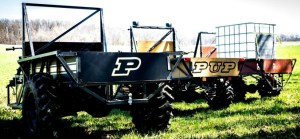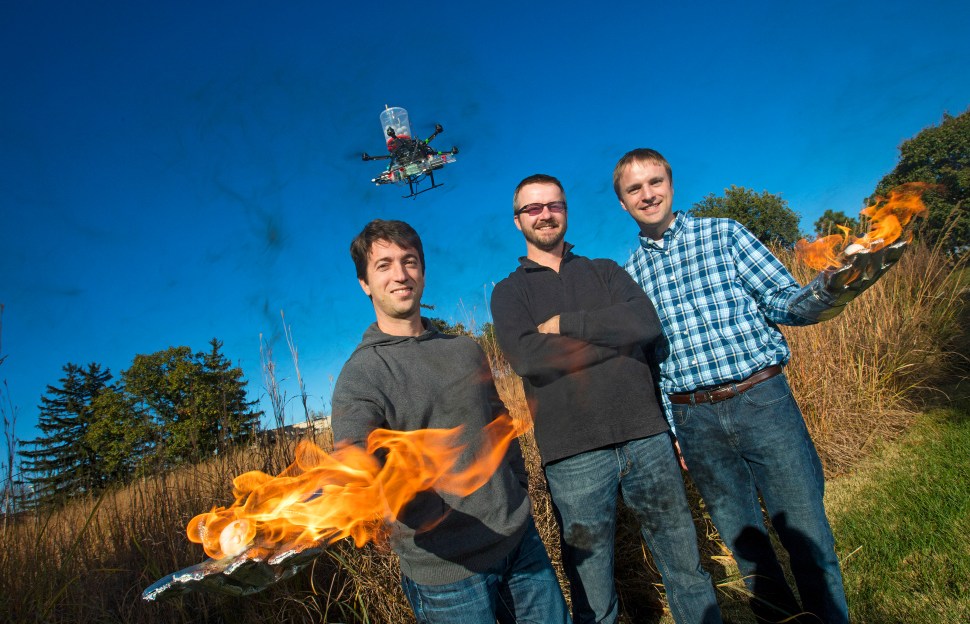John Tolley, October 9, 2018
Fire: it?s a great Taco Bell sauce, a solid emoji and it?s really useful for things like getting warm and cooking soup. But out of hand, fire is not to be trifled with; it moves indiscriminately and with terrifying speed.
Every year on the anniversary of the famed conflagration known as the Great Chicago Fire, the National Fire Protection Association sponsors the international Fire Prevention Week. Across the globe, fire brigades offer live demonstrations of firefighting and lifesaving operations as well information to the public on fire control and prevention both at home and in outdoor settings.
Across the Big Ten, researchers from a wide spectrum of disciplines are working to mitigate the deleterious effects of fire. In the spirit of Fire Prevention Week, we?ve gathered a few of our favorite stories of projects that aim to save lives, protect property and keep fire contained.
How Michigan State is engineering buildings that stand strong in the face of fire: BTN LiveBIG
?Our research is already leading to enhanced fire safety in buildings, which reduces the number of lives lost or injuries, as well as the property damage,? notes Kodur. ?Here at Michigan State, we are developing solutions that will ultimately keep buildings standing longer and give enough time for firefighters to do their job and for people to get out alive.?
How Purdue's PUP is helping fight fires in Africa: BTN LiveBIG

For years, Purdue?s PUP has been treading where most other vehicles wouldn?t dare to go.
Now, the three-wheeled off-road conveyance - formally named the Purdue Utility Platform - has a new task: Fighting fires in Africa.
Watch how a Nebraska team created a drone to fight wildfires: BTN LiveBIG

?The main benefit is we?re removing people from the interior of these fires,? says Carrick Detweiler of Nebraska?s NIMBUS Lab. ?Right now, the state of the art is you put a person walking through the middle of a field where the fire is burning all around them and they?re either walking or on an ATV or a small truck driving through and doing these interior ignitions. A number of people have been injured or died doing this in the past five or ten years because this is an inherently dangerous task. By using a UAV [unmanned aerial vehicle], we can remove the person from the interior of the fire and put them on the exterior.
?Ultimately small to large drones will replace a lot of the aerial ignition that?s currently done by manned helicopters and planes.?







 Watch multiple mats live Saturday from the Big Ten Wrestling Championships.
Watch multiple mats live Saturday from the Big Ten Wrestling Championships. 